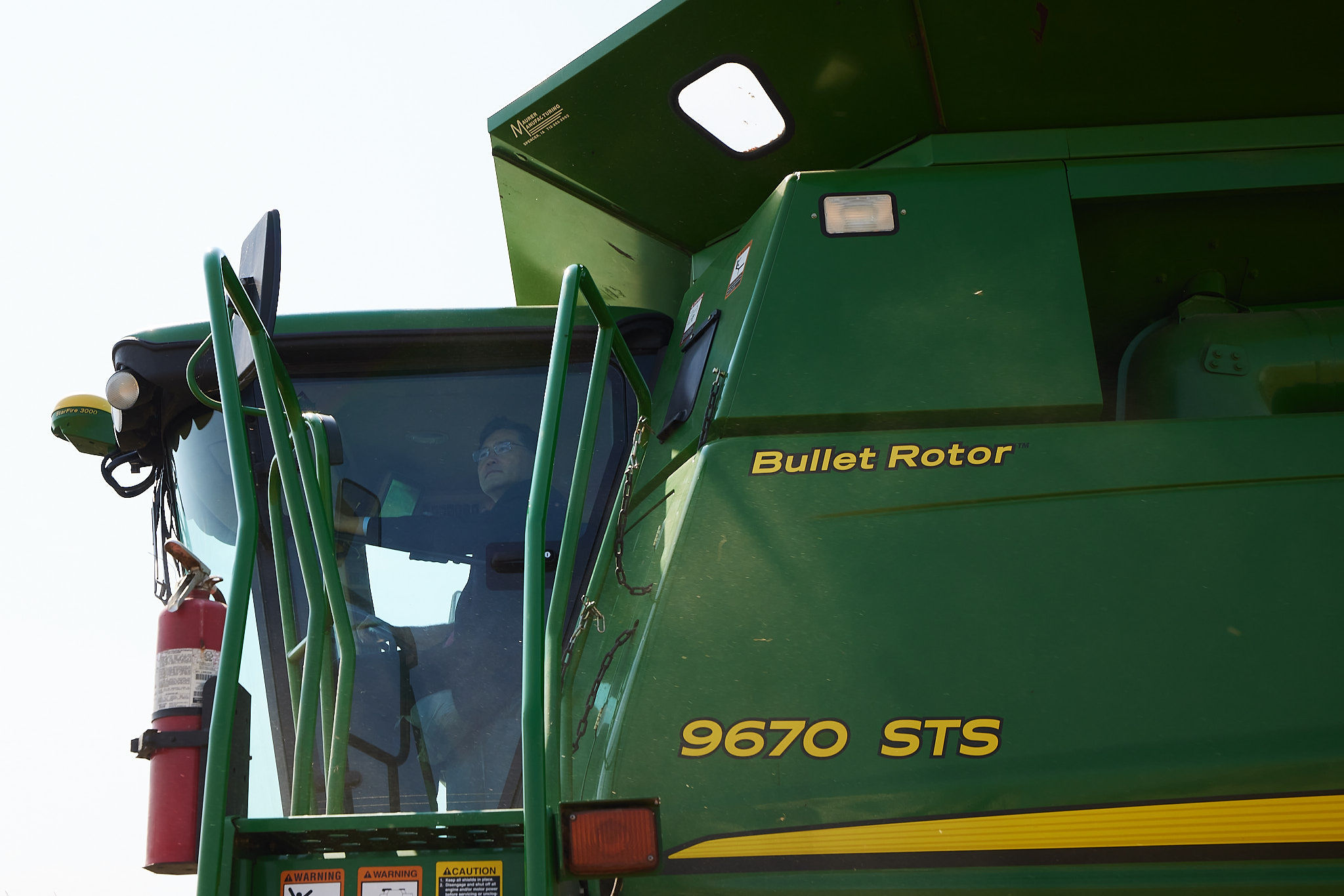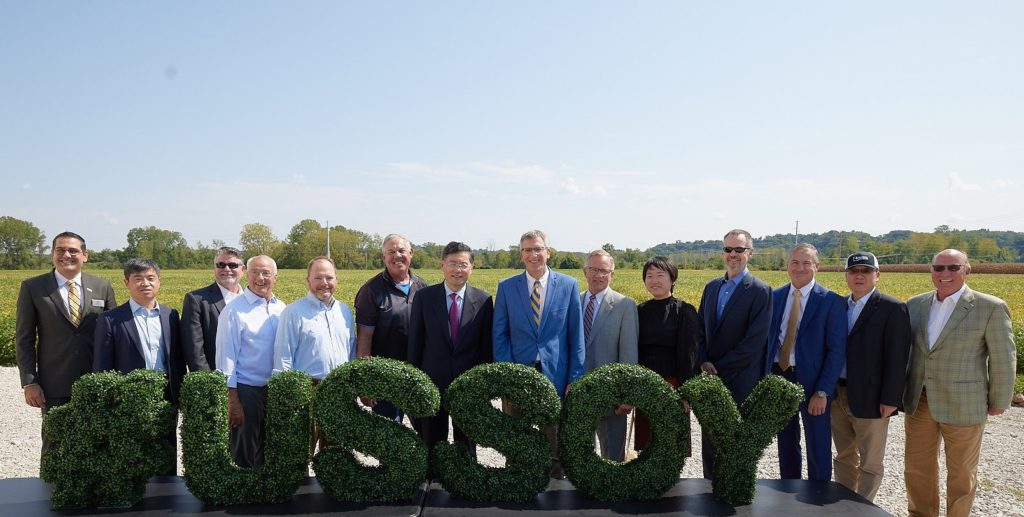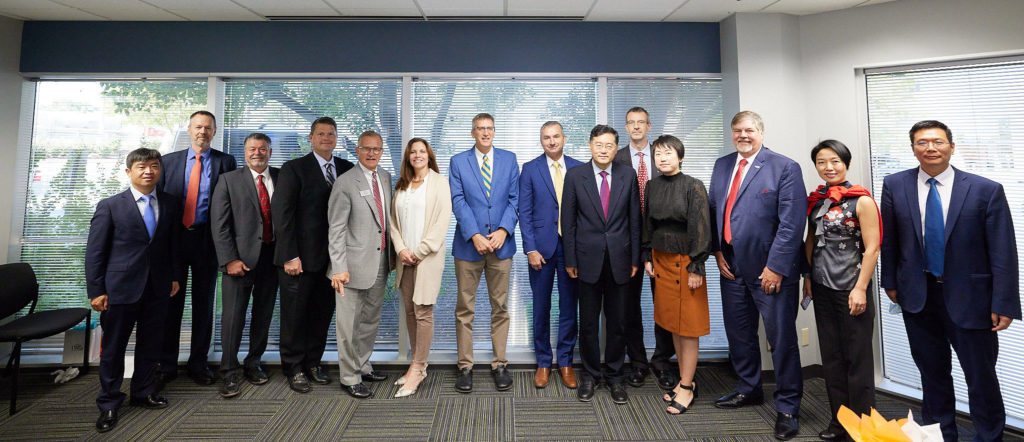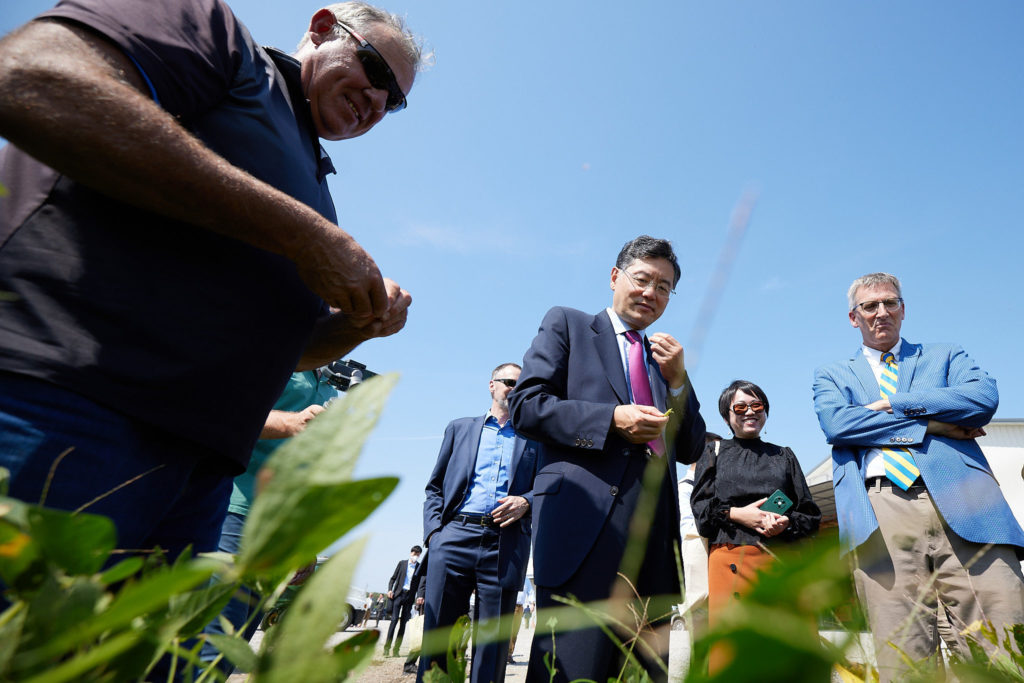
The U.S. Soybean Export Council (USSEC) hosted the China Ambassador to the U.S. Qin Gang, USDA Acting Deputy Under Secretary Jason Hafemeister, a Chinese delegation from the Ministry of Agriculture and Rural Development, Chinese Academy of Ag Sciences, and leaders from the U.S. and China food and agriculture industry (Bayer, Benson Hill, Bunge, IFF, Genective, Missouri Partnership, Syngenta, American Soybean Association, U.S. Soybean Export Council, United Soybean Board, and The Yield Lab) at a climate smart agriculture roundtable and U.S. Soy farm visit in St. Louis, Missouri, U.S.A.

There was a common theme among speakers and participants – the world’s top 2 countries in food and agriculture, their farmers and industry must take a joint and shared leadership role in feeding the world and nurturing our planet’s resources.
China is the world and Asia’s most populous country, and the world’s second largest economy. China is the world’s number one soy consumer, and the number one importer of U.S. Soy, which enables it’s world’s number one animal feed, pork, egg, aquaculture, edible oil, soy food; number two broiler sectors. Soybeans continue to be the United States’ number one food and agricultural export, and China is the U.S.’ number one import customer of U.S. Soy. U.S. Soy has collaborated with China since 1982.
Ambassador Qin Gang opened the roundtable by sharing how China’s outlook on sustainability is going through a revolution, as they continue to work on low carbon emissions, reducing greenhouse gas emissions, enhancing soil fertility, and more. He said, “Agriculture is a key contributor to China’s green development. Clean waters and green mountains are as important as gold and silver. We (China and the U.S.) have a common responsibility to promote sustainable agriculture and food security for future generations. Our market will remain open, and we will continue to collaborate with U.S. farmers, companies and entities who want to advance green development of China food and agriculture. This roundtable is a step to deepen relationships and share practices on sustainable food and agriculture. These discussions will provide a foundation and model for cooperation in the future.”
Jim Sutter, CEO of USSEC, echoed those thoughts. “U.S. Soy has the lowest carbon footprint compared with other origins. There are many initiatives by U.S. Soy farmers, as well as companies and Governments of both countries to advance sustainability. Nutrition and food security, and climate-forward solutions are top of mind for consumers and companies around the world, who are more aware of this need than ever before. We all have a responsibility to act for consumers, our children, and our grandchildren,” he said.
Participants shared various highlights of food and ag R&D, innovations, production practices, and technologies. Stan Born, U.S. Soy farmer and USSEC Vice Chair, shared that farmers deliver reliable and sustainable U.S. Soy by leveraging precision agriculture, variable rate technology, crop protectants, accessing satellite imagery and drones, and electronic controls for fuel efficiency.

Dr. Natalie DiNicola, Chief Corporate Affairs and Sustainability Officer at Benson Hill said, “Natural genetic diversity within plants helps support a nutritious food system globally. We use advanced data analytics and breeding technologies to develop better soybean seeds that optimize productivity for farmers, as well as higher quality protein for food companies and consumers at a potentially lower greenhouse gas footprint.”
Gregg Christensen, Vice President at Bunge, shared information about a program that incentivizes and pays premiums to farmers to implement regenerative agriculture practices from nitrogen management to cover cropping.
Dr. Bob Reiter, Head of R&D, Bayer CropScience talked about the impact of innovation being needed more than ever given the climate we’re in, how digital farm decisions can optimize every single acre with the design of products leveraging layers of data and AI that ensure productivity while withstanding the new climate changes.
The Chinese and industry delegation toured the farm of Warren Stemme, a seventh-generation family farmer in Chesterfield, Missouri, U.S.A., who practices sustainable and precision agriculture practices to grow soybeans, corn, and wheat.
Farmers like Stemme are delivering sustainability at the start of the food chain. Sutter wrapped up by highlighting the importance of partnership, collaboration, and innovation, from the start of the chain on a farm all the way to the consumer. “We can only be successful if we work together and we continue this U.S.- China partnership across the value chain,” he said.

At the farm visit hosted by Missouri Soy, China’s Ambassador to the U.S. Qin Gang toured a soybean field, also rode a combine to harvest some corn, followed by a traditional St. Louis-style barbecue lunch on the farm.
Global soy consumption at 1.087 MMT has exceeded global soy production at 1.061 MMT for the past three years (2019-22) following a doubling in consumption and production over the past 20 years.
This press release was funded by U.S. Soy farmers, their checkoff and the soy value chain.